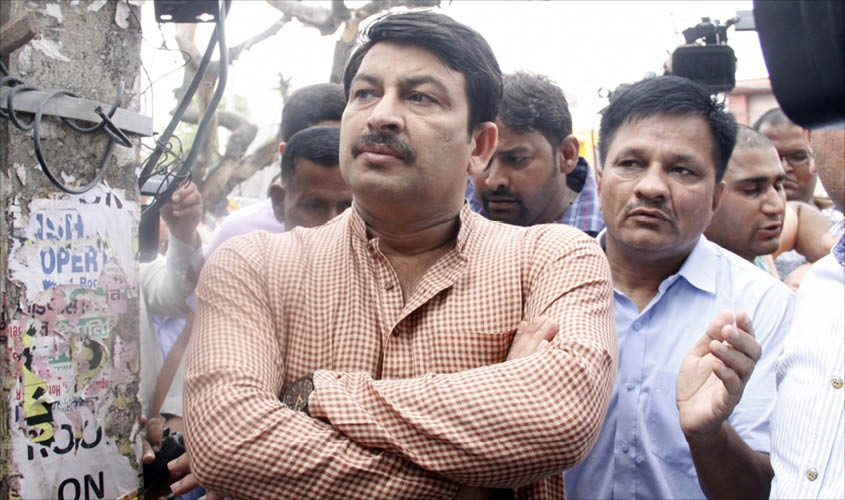Ahead of next year’s general elections, the Bharatiya Janata Party in Delhi is exploring “new” voting blocs, fearing unhappiness among the traders’ community in the wake of the ongoing sealing drive, and factors like Goods and Services Tax (GST) and demonetisation. Four grand rallies planned by the Delhi BJP in the next three months will aim at identifying the potential voters among Purvanchali, youth, women and Dalit communities.
Purvanchal Mahakumbh, the first of the four rallies, will be held on 23 September at Delhi’s Ramlila Maidan where the party is expecting a gathering of over one lakh people. BJP president Amit Shah, along with several Cabinet ministers from Bihar, Jharkhand and Uttar Pradesh and other prominent leaders from the Purvanchal region, will address the rally.
Purvanchalis form 35%-40% of the vote share in Delhi and to woo this section, the BJP had appointed Bhojpuri superstar Manoj Tiwari as its Delhi unit president. In the 2015 Delhi Assembly elections, these voters had shifted their loyalty to the Arvind Kejriwal-led Aam Aadmi Party (AAP). All 13 Purvanchali candidates fielded by AAP won with a thumping margin in the 2015 elections. In the 2013 Assembly elections, the BJP had won 14 of these 20 seats, while the AAP bagged six seats. However, Tiwari did some damage control by bringing Purvanchali voters back to the BJP fold in the 2017 municipal elections, winning all three civic bodies.
Delhi BJP president Manoj Tiwari told The Sunday Guardian: “Purvanchalis are BJP voters…Purvanchal Mahakumbh will be a grand show of our strength; we are expecting a gathering of more than a lakh.”
Similarly, the BJP will also organise youth, women and Dalit rallies in the coming months.
Well-placed sources said that these rallies assume significance for the BJP as the party fears considerable erosion in its traditional vote bank of the traders’ community. Traders in the city are displeased with the BJP in the wake of the sealing drive ordered by the Supreme Court-appointed monitoring committee and this has hit their business hard. The traders are still not convinced by the party on GST.
On the other hand, the AAP has openly criticised the Narendra Modi government over demonetisation, GST and the sealing drive, seeking to woo the Baniya voters of Delhi.
A senior BJP leader said that the exercise aims at preparing the ground for the next Lok Sabha elections where the BJP will be defending all seven parliamentary seats in the national capital. BJP workers are conducting surveys in their areas to identify first-time voters. Prime Minister Narendra Modi has also asked BJP leaders to identify nearly 1.8 crore millennial voters who were born in 2000 and will cast their votes for the first time in the 2019 elections. Similarly, to woo the Dalits living on the margins and the lower strata of society, Tiwari has been camping in slums. BJP sources said that Tiwari planned to spend at least one night in each of Delhi’s slums and JJ clusters. In the 2015 Assembly elections, slum and JJ cluster residents had voted en masse for the Aam Aadmi Party, which won 67 of Delhi Assembly’s 70 seats.
BJP leaders said that in the 23 September rally, the BJP will woo the Purvanchali voters, as they have become dominant with the rise of Manoj Tiwari in Delhi’s political landscape. In Delhi, Purvanchalis dominate at least 20 Assembly constituencies or 80 municipal wards, where they constitute 17%-47% of the vote share. The Purvanchali dominated seats in Delhi include Burari, Seemapuri, Gokalpuri, Karawal Nagar, Kirari, Badli, Nangloi, Rithala, Matiala, Vikaspuri, Dwarka, Uttam Nagar, Sangam Vihar, Deoli, Badarpur, Tughlakabad, Patparganj, Laxmi Nagar, Wazirpur and Rajinder Nagar.
As per estimates, Purvanchalis have a 25%-30% share in the Delhi administration and 30%-35% share in the private sector. While the social sector in Delhi has 50%-55% Purvanchalis, their share in the education sector is 35%-40%. Wage earners and people from unorganised sectors comprise nearly 60%-65% Purvanchali voters in Delhi.

